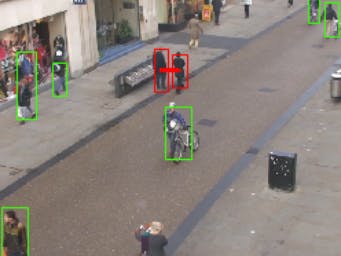The world is now under the cloud of Covid-19 and it has been a hard time when the virus is spreading across the world.
Since keeping distance and wearing a mask really help to reduce the risk of infection. So I decide to do something for distance detection, which I know is just a prototype and far from being used in real life. But I believe with the combined efforts of all around the world, we can overcome such frustration.
I have not that much experience in using Xilinx products and FPGA development. This contest really gives me a change to know the power and flexibility of FPGA. And I see some improvements that can be done to make this project really meaningful.
FPGA_HW_Acceleration_Social_Disatancing_Monitor
Social Disatancing Monitor using yolov3 and DPU HW acceleration for Xilinx adaptive computing challenge 2020
Hardware layout:
Image test for functionality:
You should follow the steps below to reproduce it.
- Download PYNQ image v2.5 from https://github.com/Avnet/Ultra96-PYNQ/releases .
- Image the SD card and boot the device, with USB camera attached, USB to Ethernet adapter to connect to Internet and a mini-DP to DP cable connecting to a Monitor.
- Follow the instructions on DPU-PYNQ page to set up the examples(Xilinx/DPU-PYNQ: DPU on PYNQ (github.com)) by getting all the notebooks, go to this page(DPU-PYNQ/README.md at master · Xilinx/DPU-PYNQ (github.com)), and download the.hwh file for Ultra96v2 to employ DPU acceleration.
- Run the dpu_yolo_v3.ipynb example project and make sure there is no warnings or errors when executing this ipynb file.
- Shift to this project, run one by one and you will get the right results.
If there is one python package missing, please install it on your own. (for I almost forget when I install the other used packages that are not installed when installing dpu-pynq)
















Comments
Please log in or sign up to comment.